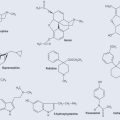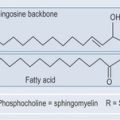Chapter 41 Scientific tests
Blood Tests (Table 41.1)
| Test | Normal Range | |
| Males | Females | |
| FULL BLOOD COUNT | ||
| Red blood cells | 4.5–6.5 1012/L | 3.8–5.0 1012/L |
| Haemoglobin | 13–18 g/100 mL | 11.5–16.5 g/100 mL |
| Hct | 45–52% | 37–48% |
| MCV | 80–96 femtoL | 80–96 femtoL |
| MCH | 27–32 pg | 27–32 pg |
| MCHC | 32–36 g/dL | 32–36 g/dL |
| RDW | 11–15% | 11–15% |
| White blood cell count | 4–11 109/L | 4–11 109/L |
| Neutrophils | 2.0–7.5 109/L | 2.0–7.5 109/L |
| Lymphocytes | 1.3–4.0 109/L | 1.3–4.0 109/L |
| Monocytes | 0.2–0.8 109/L | 0.2–0.8 109/L |
| Eosinophils | 0.04–0.44 109/L | 0.04–0.44 109/L |
| Basophils | 0.0–0.109/L | 0.0–0.109/L |
| Platelets | 150–440 109/L | 150–440 109/L |
| AUTOMATED WHITE CELL DIFFERENTIAL | ||
| Segmented neutrophils | 34–75% | 34–75% |
| Band neutrophils | 8% | 8% |
| Lymphocytes | 12–50% | 12–50% |
| Monocytes | 3–15% | 3–15% |
| Eosinophils | 5% | 5% |
| Basophils | 3% | 3% |
| Prothrombin time | 10–15 s | 10–15 s |
| LIVER FUNCTION TESTS | ||
| Bilirubin | 0–21 micromol/L | 0–21 micromol/L |
| Serum alkaline phosphatase | 20–125 iu/L | 20–125 iu/L |
| ALT/SGPT | 0–40 iu/L | 0–40 iu/L |
| ALT/SGOT | 0–48 /L | 0–48 IU/L |
| GGT | 0–45 IU/L | 0–45 IU/L |
| Total serum protein | 59–82 g/L | 59–82 g/L |
| Blood Lipids | ||
| Total cholesterol | >200 mg/dL | >200 mg/dL |
| HDL | <37 mg/dL | <47 mg/dL |
| LDL | >130 mg/dL | >130 mg/dL |
| Triglycerides | >150 mg/dL | >150 mg/dL |
| Ferritin | 18–270 ng/mL | 18–160 ng/mL |
| Fasting glucose | 60–109 mg/dL | 60–109 mg/dL |
| UREA AND ELECTROLYTES | ||
| Serum sodium | 133–145 mmol/L | 133–145 mmol/L |
| Serum potassium | 3.5–5.3 mmol/L | 3.5–5.3 mmol/L |
| Serum urea | 2.5–6.6 mmol/L | 2.5–6.6 mmol/L |
| Serum creatinine | 45–110 lmol/L | 45–110 lmol/L |
| Erythrocyte sedimentation rate (ESR) | >15 mm/h | >20 mm/h |
| Rheumatoid factor | 0–35 IU/mL | 0–35 IU/mL |
| HORMONAL LEVELS | ||
| Serum TSH | 0.3–3 mIU/L | 0.3–3 mIU/L |
| Serum thyroxine T4 (protein bound) | 4.6–12 lg/dL | 4.6–12 lg/dL |
| Free T4 (FT4) | 0.7–1.9 ng/dL | 0.7–1.9 ng/dL |
| Serum triiodothyronine (protein bound) | 80–180 ng/dL | 80–180 ng/dL |
| Free T3 (FT3) | 230–619 pg/d | 230–619 pg/d |
| Serum prolactin | N/A | 0 to 20 ng/mL |
| Serum LH | N/A | 5–20 mIU/mL |
| Serum FSH | N/A | 5 –30 mIU/mL |
| Serum FSH after menopause | N/A | 50–100 mIU/mL |
| KEY VITAMIN AND METABOLITES | ||
| Serum B12 | 150–600 pmol/L | 150–600 pmol/L |
| Red cell folate | 360–1400 nmol/L | 360–1400 nmol/L |
| Homocysteine | 5–15 lmol/L | 5–15 lmol/L |
| METALS | ||
| Copper | >20 mg/dL | >20 mg/dL |
| Urinary copper | <100 μg/24h | <100 μg/24h |
Full Blood Count
This is performed if there is:
Babies under 1 year and pregnant women can also be screened this way.
Haematocrit (Hct)
• Mean Cell (Corpuscular) Volume (MCV)
• Red Cell Distribution Width (RDW)
• Platelet Count
• Ferritin
If ferritin levels are too low, anaemia due to iron deficiency arises from the following causes:
If ferritin levels are too high:
• Homocysteine
This is now considered a biomarker for inadequate folate, vitamin B12 and to a lesser extent vitamin B6 status, as all these enzymes are involved in homocysteine metabolism (see Chapter 37 ‘Metabolic disorders’, p. 296). Blood for measuring serum homocysteine levels is taken after a 12-hour fast. Levels between 5 and 15 μmol/L indicate insufficiency.
• Liver Function Tests
Alkaline Phosphatase (ALP)
• Bilirubin
There are two reasons for an increase in total bilirubin:
• Total Proteins (TP) or Total Serum Protein
Globulins
• Efficiency of Liver Detoxification
This liver function test investigates the efficiency with which the liver can detoxify compounds. It is not the same as the liver function tests described above, which ascertains whether there has been destruction of the liver cells, but is a test of the efficiency of the detoxification pathways of the liver. The information gathered from this test will indicate to a practitioner the nutritional input and patient management that is required to improve the patient’s detoxification pathways.
• Endocrine Tests
Thyroid Function Tests (see Chapter 37 ‘Metabolic diseases‘, p. 288)
T3 is useful for hyperthyroidism tests but not used for hypothyroidism as this is the last test to become abnormal (Table 41.2).
Table 41.2 Possible results of thyroid function test (See also Chapter 37 ‘Metabolic diseases’, p. 288).

• Urinalysis (Dip-Stick Testing)
• Stool Analysis
Qualitative Analysis In Brief
Chromatography
This is used to separate compounds out of a mixture. The test compound is dissolved in a solvent and then passed through a stationary phase substance. This substance remains static and the dissolved compounds either move through or adhere to it. High-performance liquid chromatography is the most common type of chromatography used in the quality control of herbs. The groups of chemicals are forced through the stationary phase in a column at high pressure, to speed the process up. The points at which the various chemicals stop are analysed by computer. This enables manufacturers or scientists to quickly analyse plant chemicals and isolate them.











